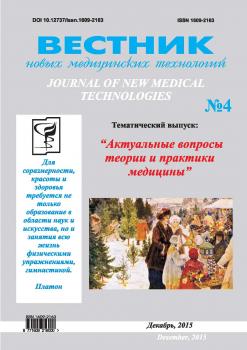The study was aimed at finding new structural features of the rear wall of the inguinal canal, the use of which allow to improving the prevention of inguinal hernias. The study involved 123 corpses of different sex and age. Anatomical and physiological nature of the valve mechanism inguinal canal, the peculiarities of the structure of the back wall in individuals of different sex and age were revealed; the various forms of inguinal gap were studied. Using cluster analysis of transverse fascia thickness abdominal length and height of the deep inguinal ring was one of three variants of the structure back wall of the inguinal canal: a strong, transient and weak. The technique of determining the location of the deep inguinal ring relative to the edge of the internal oblique abdominal muscles is offered. The use of this technique objectively reflects the anatomical and physiological characteristics of the inguinal canal as a whole. In interpreting the results of a valve mechanism of deep inguinal ring should be considered ineffective in the medial or medial edge of the boundary location of the deep inguinal ring relative to the internal oblique abdominal muscles. Functional and anatomical factors that contribute to the formation of inguinal hernias were identified. It is proved that the triangular shape of the inguinal gap causes a high risk of inguinal hernias. In both sexes the transverse abdominal fascia becomes thinner with age, and the deep inguinal ring increases in size. The obtained data will improve the effectiveness of preventive measures.
transverse abdominal fascia, deep inguinal ring, age variability
Проблема прогнозирования возникновения паховых грыж до настоящего времени не решена, что в значитель-ной мере обусловлено недостаточно изученными топографо-анатомическими особенностями задней стенки пахового канала (ПК) [1,2,7,10].
В литературе достаточно полно освещены данные о предрасположенности формы пахового промежутка (ПП) к возникновению паховых грыж [2,5], однако не конкретизирована роль отдельных линейных и угловых параметров анатомических образований подвздошно-паховой области в этиологии данной нозологической формы заболевания.
Имеются сведения по топографо-анатомическому обоснованию клапанного механизма ПК с раскрытием его сущности в аспекте вариантной анатомии глубокого пахового кольца (ГПК), отхождения внутренней косой (ВКМЖ) и поперечной (ПМ) мышц живота от паховой связки, степени развития межъямковой связки [4]. Однако отсутствуют объективные критерии оценки состояния задней стенки ПК, которые возможно помогли бы систематизировать ее вариантную анатомию и, тем самым, облегчить интерпретацию анатомической ситуации при оперативных вмешательствах в подвздошно-паховой области.
1. Aboev A.S. Patogeneticheskiy vybor sposoba operatsii pakhovoy gryzhi: avtoref. dis.… kand. med. nauk. M., 2005.
2. Zhebrovskiy V.V. Khirurgiya gryzh zhivota. M.: Med. inform. agentstvo, 2005. 384 s.
3. Kukudzhanov N.I. Pakhovye gryzhi. M.: Meditsina, 1969. 440 s.
4. Lavrova T.F. Klinicheskaya anatomiya i gryzhi peredney bryushnoy stenki. M.: Meditsina, 1979. 104 s.
5. Nesterenko Yu.A., Gaziev R.M. Pakhovye gryzhi. Rekonstruktsiya zadney stenki pakhovogo kanala. M.: BINOM. Laboratoriya znaniy, 2005. 144 s.
6. Orlov A.S. Anatomo-klinicheskoe obosnovanie primeneniya nenatyazhnoy gernioplastiki v lechenii pakhovykh gryzh: avtoref. dis.… kand. med. nauk. M., 2008. 28 s.
7. Lyubykh E.N. Oposredovannaya plastika pri lechenii pakhovykh gryzh. Materialy nauchno-prakticheskoy konferentsii Tsentral´nogo federal´nogo okruga Rossiyskoy federatsii: Aktual´nye voprosy khirurgii. Orel, 2009. S. 113-115.
8. Trushchelev S.A. Meditsinskaya dissertatsiya. Sovremennye trebovaniya k soderzhaniyu i oformleniyu. Pod red. akademika RAMN, professora N.A. Denisova. M.: GEOTAR-Media, 2009. 416 s.
9. Lang T. Twenty Statistical Errors Even You Can Find in Biomedical Research Articles. Croatian Medical Journal. 2004. Vol. 45 (4). P. 361-370.
10. Read R.C. Herniology: past, present, and future. Hernia, 2009. P. 77-80.





